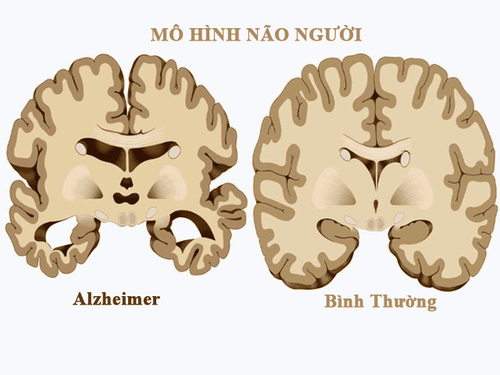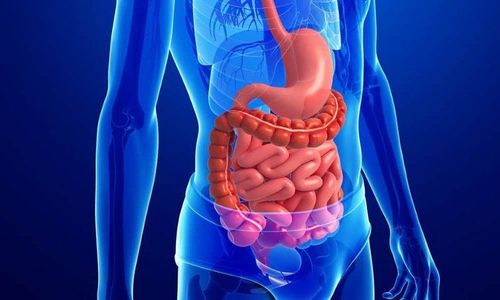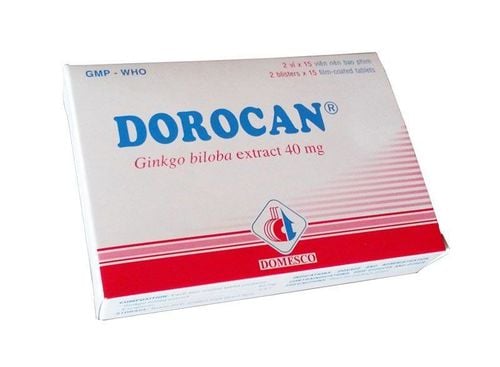This is an automatically translated article.
Posted by Master, Doctor Mai Vien Phuong - Department of Examination & Internal Medicine - Vinmec Central Park International General Hospital
Medium-chain fats are useful in the treatment of a number of digestive disorders, in which medium-chain fats are mainly used to reduce fat malabsorption and act as a source of calories for optimize nutritional status.
1. Structure of medium chain triglycerides
A fatty acid is a simple lipid molecule with a carboxylic acid group at one end and a hydrocarbon chain at the other end. Triglycerides are lipid molecules with three fatty acids attached to a glycerol backbone. Similar to simple fatty acids, the length of the fatty acid group determines the nomenclature of short-chain triglycerides (SCTs), medium-chain triglycerides (medium-chain fats), and medium-chain triglycerides. length (LCT).
The fatty acid groups of medium chain fats include caproic acid, caprylic acid, capric acid, and lauric acid. Compared with long-chain triglycerides, medium-chain fats have a smaller molecular mass, are water-soluble, oxidize quickly for energy, have a lower smoke point (the temperature at which volatile substances are produces and blue smoke is seen as a result of oil oxidation) and liquid at room temperature. Medium-chain fats contain only saturated fatty acids and are therefore free of EFAs, linoleic acid, and linolenic acid.
2. Digestion and absorption
The length of fatty acids affects digestion and absorption in the gastrointestinal tract. The entry of triglycerides as long-chain triglycerides from the stomach into the duodenum stimulates intestinal secretion of the hormone cholecystokinin (CCK) and pancreatic enzymes from the pancreas. CCK promotes the release of bile from the gallbladder to help emulsify triglycerides into smaller fat droplets to maximize its digestion.
Then, pancreatic lipase cleaves fatty acid chains from triglycerides to form individual fatty acid molecules which then aggregate into micelles. The microspheres are absorbed into enterocytes along the intestinal contour via passive diffusion or transported by fatty acid transporters.
The chylomicrons are released through exocytosis, enter and move through the lymphatic system and finally, exit into the subclavian vein to reach the bloodstream. In the intracellular space, long-chain fatty acids bind to carnitine for transport into the mitochondria for subsequent B-oxidation. In states of carnitine deficiency that contribute to severe protein malnutrition (eg, chronic malabsorption, small bowel obstruction, starvation), these long-chain fatty acids cannot be utilized effectively and instead leads to accumulation of unoxidized fatty acids and impaired urea generation, ketosis, and gluconeogenesis. Clinical sequelae may include fatty liver, hepatomegaly, myopathy, and altered mental status.
In contrast, the digestion of medium chain fats is quick and simple. Medium-chain fats do not stimulate CCK secretion. Absorption of medium-chain fats occurs via passive diffusion along the gastrointestinal tract into the albumin-binding portal system. No further encapsulation or modification of medium chain fat molecules is required. Furthermore, medium-chain fats do not depend on the carnitine acyltransferase system for transport into the mitochondria for B-oxidation. This results in faster metabolism of medium-chain fats and improved utilization of even in protein deficiency.
3. Sources of Medium Chain Fats
Most fats and oils of animal and vegetable origin contain long-chain triglycerides (e.g., fish, avocados, nuts, seeds, corn, peanuts, safflower, and soybean oils).
In contrast, natural sources of medium-chain fats include coconut oil and palm kernel oil, although these oils also contain long-chain triglycerides. Commercial medium-chain fat formulations may include naturally derived medium-chain fatty oils, 100% synthetic medium-chain fatty acids (produced from medium-chain fatty acids hydrolysed from coconut or palm kernel oil, purified, and then re-esterified to a glycerol backbone), a physical blend (a mixture of medium-chain fats and long-chain triglycerides), or lipids containing structure. Structural lipids are synthetic lipid molecules with a blend of medium- and/or long-chain fatty acids attached to the backbone of glycerol. In the clinical setting, it is not uncommon for healthcare professionals to advise their patients to use coconut oil for medium chain fats

4. Dosage put into the body
Taking too much medium-chain fatty oil by mouth has been linked to gastrointestinal distress, such as abdominal discomfort, cramps, bloating, gas, and diarrhea. One tablespoon (15 mL) of medium-chain fat oil contains 14 grams of fat and 115 calories. A maximum daily dose of 50-100 grams has been suggested to improve gastrointestinal tolerance; this equates to 4-7 tablespoons (60-100 mL) per day (56-98 grams of fat and 460-805 calories).
The daily dose of medium-chain fats should be increased as tolerated to the maximum daily dose, with equally divided doses over all meals. Medium-chain fats can be easily mixed into a wide variety of foods and beverages. If medium-chain fats are used in cooking, the temperature must be kept below 150°C (302°F) to reduce the risk of oxidation, or the flavor of the food may be affected. One tablespoon of medium-chain fatty oil can also be administered via the syringe feeder along with a 30ml pre- and post-flush rinse. In patients with severe fat restriction, a source of EFAs will need to be provided in the diet along with medium-chain fat supplementation to prevent EFA deficiency. Medium-chain fatty oils do not require a prescription. Although medium-chain fat has distinct characteristics, it is not considered a panacea and its use is purported to be used in conjunction with other therapies to treat the disorder.
Because of their integral role in physiological function, medium-chain fats may have potential benefit in a number of unrelated disorders of the gastrointestinal tract.
5. The role of medium-chain fats in pancreatic insufficiency
Pancreatic insufficiency is characterized by disruption of the exocrine function of the pancreas, which can lead to decreased synthesis and/or release of pancreatic enzymes that normally aid in the digestion of nutrients in the small intestine, especially are long-chain triglycerides in the diet. It can arise in acute or chronic pancreatitis, cystic fibrosis, and as a result of pancreatectomy. The main intervention for pancreatic insufficiency is pancreatic enzyme replacement therapy and sometimes acid suppression therapy. At this time, there is limited research on the effects of oral medium-chain fatty oils in pancreatic insufficiency.
6. The role of medium-chain fats in obesity
Because of its effect on thermogenesis and satiety, medium-chain fats have been suggested to reduce obesity by increasing energy expenditure, decreasing food intake, and decreasing fat deposition in tissues. fat. A systematic review and meta-analysis of 13 randomized controlled trials in healthy adults found that when compared with long-chain triglycerides, medium-chain fats decreased body weight, waist and hip circumference, total body fat, total subcutaneous fat, and visceral fat. Serum lipid levels did not differ.

7. The role of medium-chain fats in cardiovascular disease
In cardiovascular disease, medium-chain fats have been suggested to reduce hyperlipidemia based on observations that indigenous populations eating a lot of copra have a low incidence of cardiovascular disease. However, a review of 8 clinical trials and 13 observational studies on the effects of coconut oil consumption on cardiovascular risk indicated that there was insufficient evidence to support this practice.
8. The Role of Medium Chain Fats in Alzheimer's Disease
In mild to moderate Alzheimer's disease, medium-chain fats have been studied to improve cognition based on the theory that decreased glucose metabolism in the brain can lead to cognitive and memory impairments, so taking Medium-chain fats as an alternative energy source such as ketones for the brain will be able to resist this decline. Small studies have shown modest improvements in memory recall after consuming medium-chain fats.
9. The role of medium chain fats in epilepsy
The ketogenic diet, which is a low-fat, low-carbohydrate diet, is commonly used as a treatment for intractable epilepsy in children. A Cochrane review of the traditional ketogenic diet for epilepsy concluded that its use seems promising in the treatment of epilepsy, but further studies are needed.
While the ketogenic diet typically includes long-chain triglycerides, the use of medium-chain fats in a ketogenic diet may be more appealing since they are more likely to produce ketones for rapid oxidation. A ketogenic diet rich in medium-chain fats will also require less fat and more carbohydrates to create more variety in the diet. However, a randomized trial of 145 pediatric patients with treatment-resistant epilepsy found no difference in efficacy between a medium-chain fat diet and a traditional ketogenic diet.
Conclusion Medium-chain fats have unique digestive, absorptive, and oxidative properties that have led to their use in the treatment of digestive disorders of great interest. The easy absorption of medium-chain fats without the need for bile or pancreatic enzymes makes them a good source of calories in causing malabsorption and lipodystrophy due to diseases, such as such as pancreatic or biliary failure. Because of their ability to cross the lymphatic system, medium-chain fats can also serve as a lipid source for patients with nutrient leakage. Since medium-chain fats do not contain EFAs, supplementation with EFAs containing vegetable oils will be necessary after 3 weeks to avoid deficiency. Although studies are limited, medium-chain fats may be considered as a single source of additional calories, or as part of a gut product, in certain digestive disorders.
Please dial HOTLINE for more information or register for an appointment HERE. Download MyVinmec app to make appointments faster and to manage your bookings easily.
References
Neha D. Shah, Berkeley N. Limketkai, The Use of Medium-Chain Triglycerides in Gastrointestinal Disorders, Nutrition issues in gastroenterology, series
160, practicalgastro. Bach AC, Babayan VK. Medium-chain triglycerides: an update. Am J Clin Nutr. 1982;36(5):950-62. 2. Gropper SS. Advanced nutrition and human metabolism. 6th Ed. ed. Belmont, OH: Cengage Learning; 2012. Isaacs PE, Ladas S, Forgacs IC, et al. Comparison of effects of consuming medium- and long-chain triglyceride on gallbladder volume and release of cholecystokinin and other gut peptides. Dig Dis Sci. 1987;32(5):481-6. Symersky T, Vu MK, Frolich M, et al. The effect of equicaloric medium-chain and long-chain triglycerides on pancreas enzyme secretion. Clin Physiol Funct Imaging. 2002;22(5):307-11.














